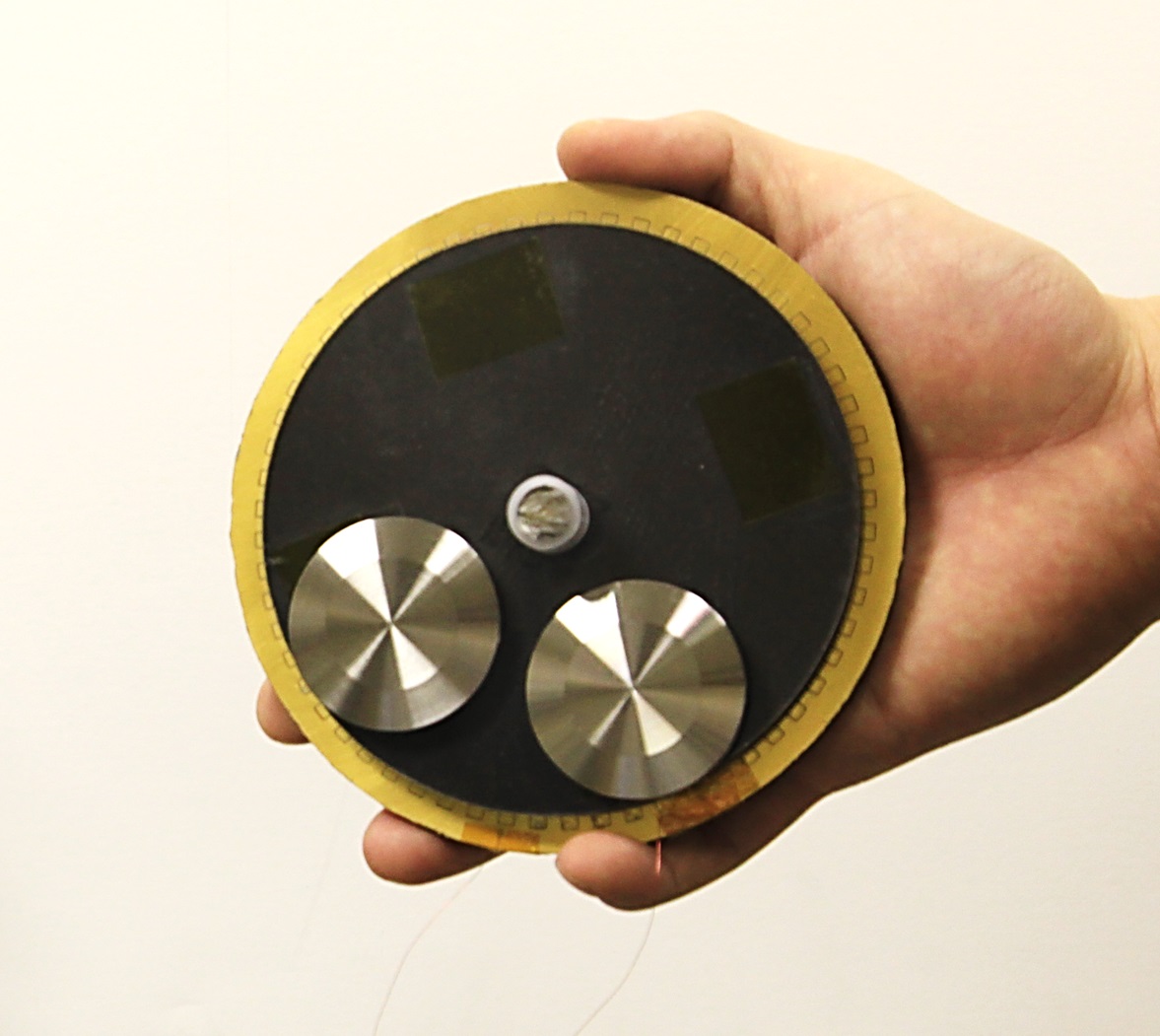New Device Could Charge Your Smartphone As You Walk

Power cords and batteries are the bane of every gadget: You either carry around the necessary cords and cables, or you hope the battery lasts. But now, researchers want to change that, by building a charger powered by the motion of your body as you walk.
The device — built by Georgia Tech researchers, led by Zhong Lin Wang — consists of four discs layered on top of one another. The first disc is made of copper, and rotates. The next is a polymer and remains stationary, and the third is a gold layer that is divided into sectors, with alternating sections cut out, to make something that looks like a bicycle wheel. The last layer is made of acrylic.
When the copper disc rotates, positive charges in the copper move past the negative charges in the polymer. That causes an imbalance of charges in the gold layer, with each "spoke" of gold having either more positive or more negative charges. This imbalance means that when a wire is connected between sectors, a current flows. [What's That? Your Physics Questions Answered]
Wang said the device can generate power as long as something causes the copper disc to rotate. For example, he demonstrated that flowing water could work, in the lab.
He has also experimented with wearable versions. "This is even more general," he told Live Science. "You could attach it to your leg, or in the folds of a jacket."
The device works on the same principle as static electricity. For example, when you walk on a rug in wool socks, electrons build up in the socks (and in you), and when you touch a metal doorknob, they jump from your finger, making a spark. There's a lot of voltage in the spark — enough to make the jump through the air — but not much current, which is why the shock doesn't kill you.
"The phenomenon has been known for 1,000 years," Wang said. "But it's rarely been utilized for power."
Sign up for the Live Science daily newsletter now
Get the world’s most fascinating discoveries delivered straight to your inbox.
Wang said that his device is more efficient than a traditional generator, at least for its size. A generator works by moving either a wire through a magnetic field or a magnetic field over a stationary wire. Either one requires a certain number of turns of wire to make a certain voltage, plus a strong magnet. Those components take up space, which is why generators tend to be rather bulky — even a small one that could power a phone would be the size of a brick, and it would need a power source to boot.
But the device the researchers created can be made thin and flat; the one Wang demonstrated is about 4 inches (10 centimeters) across, and swinging it in the hand generated enough electricity to power a small array of lights, or about 5 volts, which is enough to charge an iPhone.
Wang said the device is 50 times more efficient than a traditional generator of the same size.
The device is detailed in the March 4 issue of the journal Nature Communications.
Follow Live Science on Twitter @livescience. We're also on Facebook & Google+.










